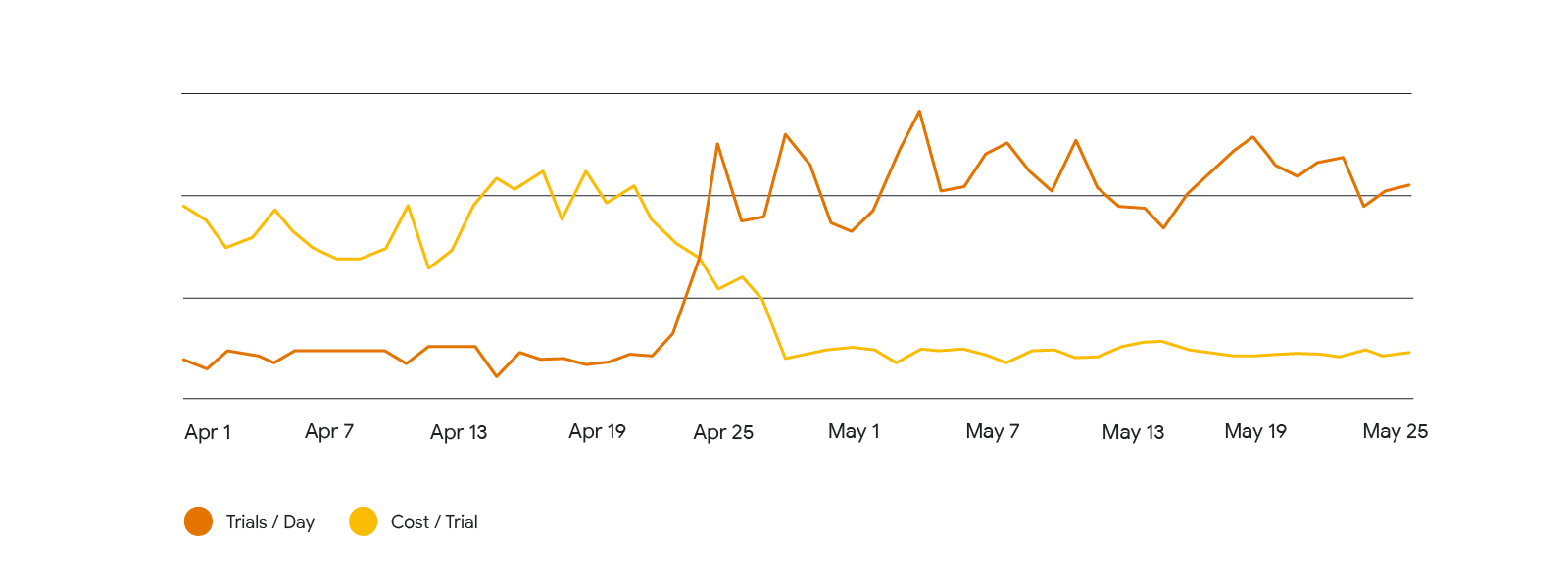
Machine learning has had a profound impact on advertising. It can save marketers time and money by automating more tedious work, and it can drive better insights for campaigns. But it's only as good as the data that powers it. And you always need to feed the machine — sometimes with your own(ed) data.
First-party data — information sourced directly through your CRM, website analytics, and other touchpoints — is unique to your business and gives you clear insights into your customers. Putting this data to work can drive more conversions and a higher return on investment.
Challenges during rapid growth
Gtmhub is a multinational startup that helps companies achieve their goals through Objective and Key Results (OKR) software. Over the past year, the company has grown by nearly 400% with 800 new customers — almost 75% of them self-service users.
"We were experiencing incredible growth but started to encounter a scaling challenge when it came to understanding what channels to use to reach our prospective customers and how to find more relevant leads,” says Seth Elliott, then CMO, now COO of Gtmhub.
Putting this data to work can drive more conversions and a higher return on investment.
COVID-19 pushed the startup to focus on a self-service model since it wouldn’t have been able to keep up with growth using a high-touch, sales-based approach. But Gtmhub didn't have enough self-service leads to inform the algorithms when it came to advertising.
Finding opportunities to drive results
Like many B2B businesses, Gtmhub has a long lead-to-sales journey with a number of key milestones, ranging from customers signing up for the initial trial to downloading an ebook to starting paid accounts.
With the help of VertoDigital, a performance agency skilled in B2B technology lead generation, the teams mapped their trial-to-sale journey. They identified the pre-sale user signals that made them more likely to convert, with a plan to leverage this information to drive results.
At the time, the cost-per-trial was too expensive, mostly due to a higher cost-per-click for targeted keywords in Search. So Gtmhub set out to find quality trial users at a low acquisition cost— ideally at a cost per trial 50% below what they were then generating.
Defining your ideal clients
Since Gtmhub didn’t have much historical customer data as a startup, they turned to other business metrics — like product engagement and platform usage metrics — to define their ideal clients. The teams used product usage events as conversion signals for campaign optimisation.
They looked at the different actions the users took within the platform — like the number of times they logged in over a week (the higher the number, the more engaged the user), how many goals and OKRs they created in the platform (the more, the better), and whether they invited teammates to use the platform — to identify the profile of an engaged user (and likely future customer).
We witnessed the true power of using our own data to improve the algorithms.
The teams realised that they had an opportunity to use this information to scale their growth by driving volume with Google Display Network (GDN), which offered access to a vast audience and inventory at a lower price.
Optimising with first-party data
Gtmhub recently launched Starter plan— a $1 per month plan aimed at smaller firms and self-service trial users — which was ideal to pilot this campaign. They used offline conversion imports to send product usage as optimisation signals back to Google Ads and power Smart Bidding.
Driving more trials at a lower cost

Gtmhub grew their self-service pipeline by 420% by adopting offline conversion tracking for GDN, while decreasing cost-per-trial by 75%.
After seeing the success of the campaign, the teams look to continue to optimise by increasing the frequency of offline conversion uploads — making sure to incorporate conversion metrics daily in order to improve the real-time signals in Google Ads.
“We witnessed the true power of using our own data to improve the algorithms. Even as a new company, we were able to reach more high-intent customers while lowering acquisition costs. We’re already planning for what we can do next,” says Elliot.
Marketer takeaways
- Identify your ideal customers with business metrics like product usage — and use those signals to find others like them who are most likely to convert.
- Make use of first-party data by importing offline conversions to enhance machine learning capabilities like Smart Bidding.
- Scale growth by driving volume. GDN can help you gain access to a vast audience and inventory at a lower price.








